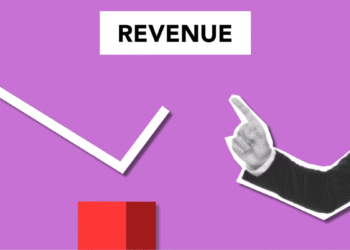If there’s one thing I wish I did sooner in my store, it’s A/B testing.
Early on, I’d change stuff based on vibes. “This button feels too small.” “Let’s try a new headline.” Half the time, it helped… maybe. Other times, sales dipped and I had no idea why. Now? I test everything. Headlines. Buttons. Offers. Images. And I’ve seen conversion bumps as high as 27% — from one tiny tweak.
Here’s how to run A/B tests the smart way — no overthinking, no fancy tools required.
What Is A/B Testing and Why Does It Work?
A/B testing is just comparing two versions of something — your product page, headline, CTA, whatever and seeing which one performs better.
It’s not magic. It’s data.
-
Version A: What you have now
-
Version B: A small change you want to test
-
Goal: See which one gets more conversions
The beauty is that it removes ego from the equation. You’re not guessing anymore — you’re letting your customers show you what works.
For a solid foundation on interpreting your test results, read Understanding E-Commerce Analytics: A Beginner’s Guide to Smarter Store Decisions.
What to Test First in Your Store?
You don’t need to test your entire website. Start small. Start where it matters.
Here’s what worked for me:
-
CTA buttons: “Add to Cart” vs. “Buy Now”
-
Product titles: Straightforward vs. benefit-driven
-
Hero images: Flat lay vs. lifestyle photo
-
Price displays: $20 vs. “Only $20 — today only!”
-
Discounts: Free shipping vs. 10% off
-
Popups: Lead magnet vs. mystery discount
-
Email subject lines: Emojis vs. no emojis (yes, really)
If you have enough traffic or email volume, any of these can deliver insight fast.
Testing these areas aligns well with broader strategies like Conversion Rate Optimization for More Sales, especially if you’re just starting to optimize.
Tools That’ll Make Your Life Easier
I’ve used both free and paid tools. Here’s my shortlist:
-
Shopify Apps: Neat A/B Testing is great for product pages
-
VWO or Optimizely: Powerful (but pricey) if you’re scaling
-
Google Optimize: Discontinued, but legacy users still have access
-
Hotjar / Microsoft Clarity: Not true A/B testing, but shows why a version may win or lose
-
Klaviyo / Mailchimp: Perfect for A/B testing subject lines and email content
If you’re using heatmaps to guide your decisions, I highly recommend this step-by-step guide on how to use heatmaps to improve conversions.
No matter your budget, there’s a tool to get you started.
How I Run A/B Tests Without Getting Overwhelmed?
Here’s my no-stress process:
-
Choose ONE element
Never test multiple things at once, you won’t know what made the difference. Just pick one: button, image, title. -
Set a clear goal
More clicks? Higher cart adds? More email signups?
If you don’t set a goal, you can’t measure success. -
Split your traffic
Use a tool to divide your traffic 50/50 between A and B. Most tools handle this for you. -
Let it run (don’t panic!)
I used to check results hourly. Don’t. Let it breathe. Run for at least a week or until you hit 500+ visits. -
Analyze and apply
Whichever version wins, apply it. Then test the next thing.
Rinse and repeat.
Want help spotting weak points before you even begin testing? Learn how to identify and fix sales drop-off points.
Mistakes I Made So You Don’t Have To
-
Ending the test too early: A 3% lead on Day 2 means nothing.
-
Testing on low traffic: You need enough data. Otherwise, it’s noise.
-
Changing too many things at once: Pick one variable, not five.
-
Ignoring external events: Running a test during Black Friday? Your results are probably skewed.
-
Letting personal bias win: The version I liked almost never won. Let the data lead.
You can avoid some of these pitfalls with better reporting. Here’s a simple guide to creating monthly reports for smarter decisions.
Tips for Smarter Testing
-
Start with high-traffic pages — you’ll get results faster
-
Use heatmaps to find friction points before testing
-
Document your tests — what you tested, what won, and why
-
Celebrate small wins — even 1–2% adds up fast
-
Test continuously — make it part of your monthly routine
A/B testing is like working out — consistency is everything.
Final Thoughts
If you’re serious about growing your e-commerce store, A/B testing isn’t optional, it’s essential.
You don’t need a full-time data team. Just pick something to test, set a goal, run it, and learn. Bit by bit, you’ll turn that “pretty good” store into a high-converting machine.
And the best part? Your customers will tell you exactly what they want, you just have to listen.








